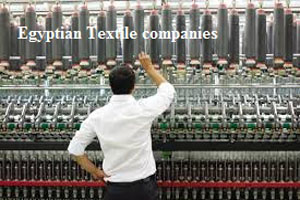
Egyptian textile market aims to quadruple exports by 2025
YarnsandFibers News Bureau 2015-08-17 12:00:00 – CairoEgypt has had a long history of textile manufacturing and they have one of the best cottons in the world but since the 2011 revolution, Egyptian cotton’s star has faded as cash subsidies from the government and output of premium cotton have shrunk, according to Mohamed Kassem, Chairman of the Ready Made Garment Export Council, a public-private partnership between the Ministry of Trade and Industry and some of Egypt’s most prominent clothing exporters.
Yet as production of Egyptian long-fiber cotton has fallen – from a high of nearly 2.5 million bales in 1970 to just 340,000 today, according to the U.S. Department of Agriculture – the textiles market has been blossoming.
Exports of textiles and ready-made garments (RMG) have reached $2.5 billion, and the sector generates around one in three jobs in more than 4,400 companies around Egypt.
Mr. Kassem said that the sector has its sights set on even more growth, driven by exports to Egypt’s two biggest markets for textiles and RMG; the United States and the European Union. Their goal is to increase from the $2.5 billion in exports that they are currently producing to $10 billion by 2025.
With the international market projected to double in the next 10 years from $350 billion to $700 billion, it will not be difficult to reach the goal if they do their job right. Part of doing the job right involves changing with the times and producing garments and textiles with other materials besides Egyptian cotton, explains Mr. Kassem, who spent years in the foreign service – including a stint at the Egyptian embassy in Washington, D.C., as the commercial attaché in charge of promoting Egyptian exports.
Egyptian cotton is called the ‘extra-long staple.’ The demand for this type of cotton does not exceed 3-4% of the total demand of all fibers. To be a major player, other fibers including short staple cotton must be used.
Egypt will not completely abandon the luxury cotton that bears the nation’s name, but the industry has realized that “you cannot use an expensive Egyptian cotton to produce cheap yarn, said the Ready Made Garment Export Council chairman.
And that’s the way the market is going, according to Mr. Kassem. To be a player in this market, you need to play the game that everyone is playing.
Last year, around one third of Egyptian textile exports and more than half of Egyptian ready-made garments went to the United States. Textile exports to the United States represent a quarter of non-oil exports and 20% of total manufacturing in Egypt.
Playing a large part in Egypt’s success in the U.S. market are the 15 Qualifying Industrial Zones (QIZ) in the country.
Companies in QIZ can export goods to the United States duty-free, provided at least 35% of the product they sell is manufactured in a qualifying zone and 10.5% of the product or its component parts are made in Israel.
Waleed El Zorba, the Chairman of the Nile Clothing Company, said that QIZ was “a life-saver for his company.
According to the Egyptian Trade Ministry’s QIZ website, exports from Egypt have risen sharply since QIZ began, with the bulk of these exports going to US markets.
Mr. El Zorba said that there’s an attraction to doing business with American companies that is hard to find elsewhere.
Europe is very segmented. England is buying for England; France is buying for France, so the order quantities shrink accordingly, he explains.
Mr. Kassem agrees that Egypt’s QIZ has had a huge, positive impact on business. But, he adds, it has also enhanced Egypt’s relations with one of its neighbors.
Through QIZ, they are now duty-free exporters, but there is also a political initiative, which brings Israelis and Egyptians together in business. In his opinion, this is one of if not the only political initiative that has paid back.
Mr. Kassem adds, however, that it has been a struggle to maintain double-digit growth that the textile and RMG sector was enjoying before the 2011 revolution.
Not only have government subsidies for luxury, long-fiber cotton dried up, but so did some customers’ confidence.
Kassem said that they are holding their ground at a very high cost with a lot of hard work to keep their customers from leaving. In the first days of the revolution, they were sending out situation updates so that they didn’t rely on Fox News to hear what was happening.
Mr. El Zorba admits that he was actually spending almost every other month traveling to New York to let people know that their ports are open, business is running, there would be no stop in flow, and don’t pay attention to everything they are seeing on the news.
His company never missed a delivery to clients, even at the height of the revolution. But that took about a year for them to realize.
Today, Egyptian textile and RMG companies are beginning to turn the corner, and Mr. Kassem is urging Americans to continue buying made-in-Egypt clothing and textiles.
Garments out of Egypt are seeking customers in the U.S. Every garment you buy from Egypt is a vote for democracy.
The label “Egyptian cotton†on a set of bed sheets evokes sweet dreams of luxurious softness. Indeed, Egyptian cotton was once the bar against which all other linens and clothing were measured.
Market Intelligence
Ask for free sample Report

experience
Customer Base
dedicated team
Countries Served Worldwide









